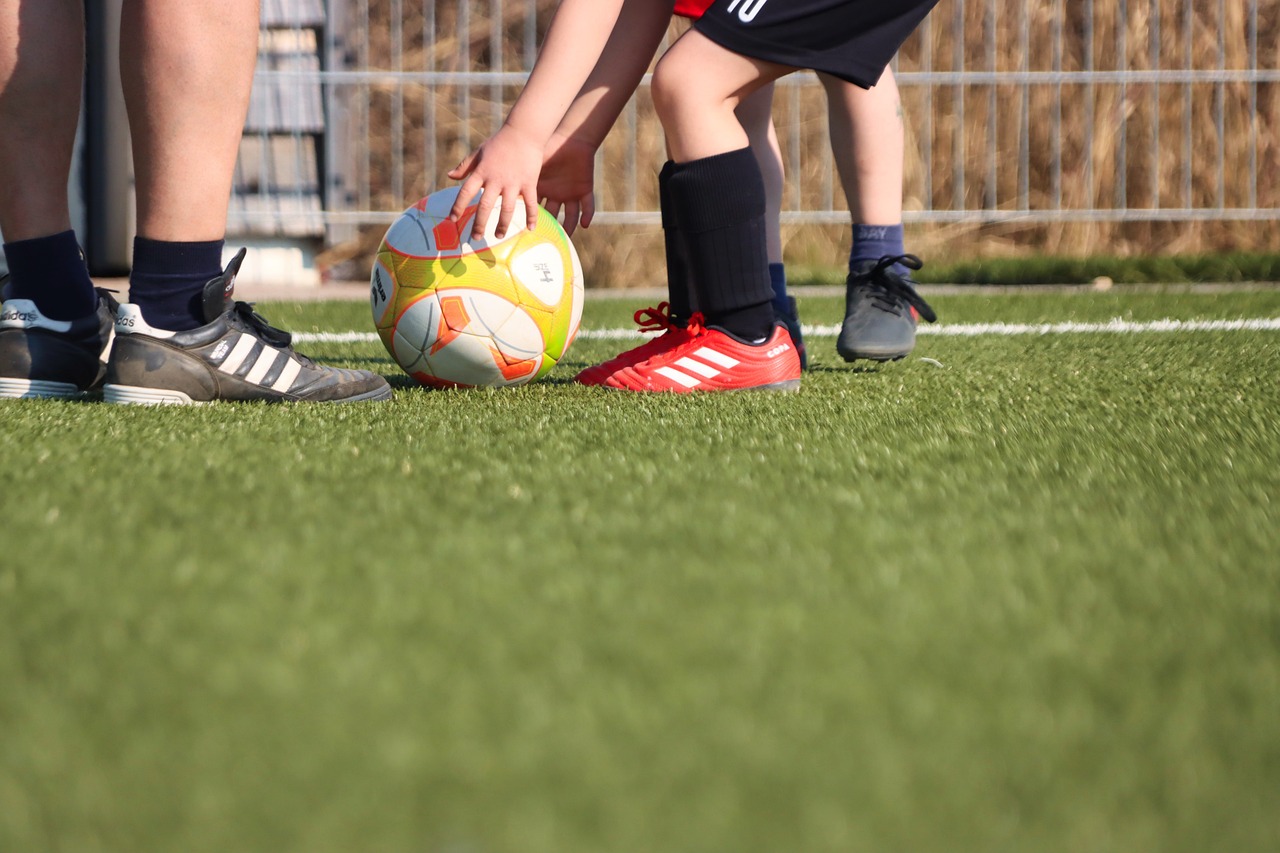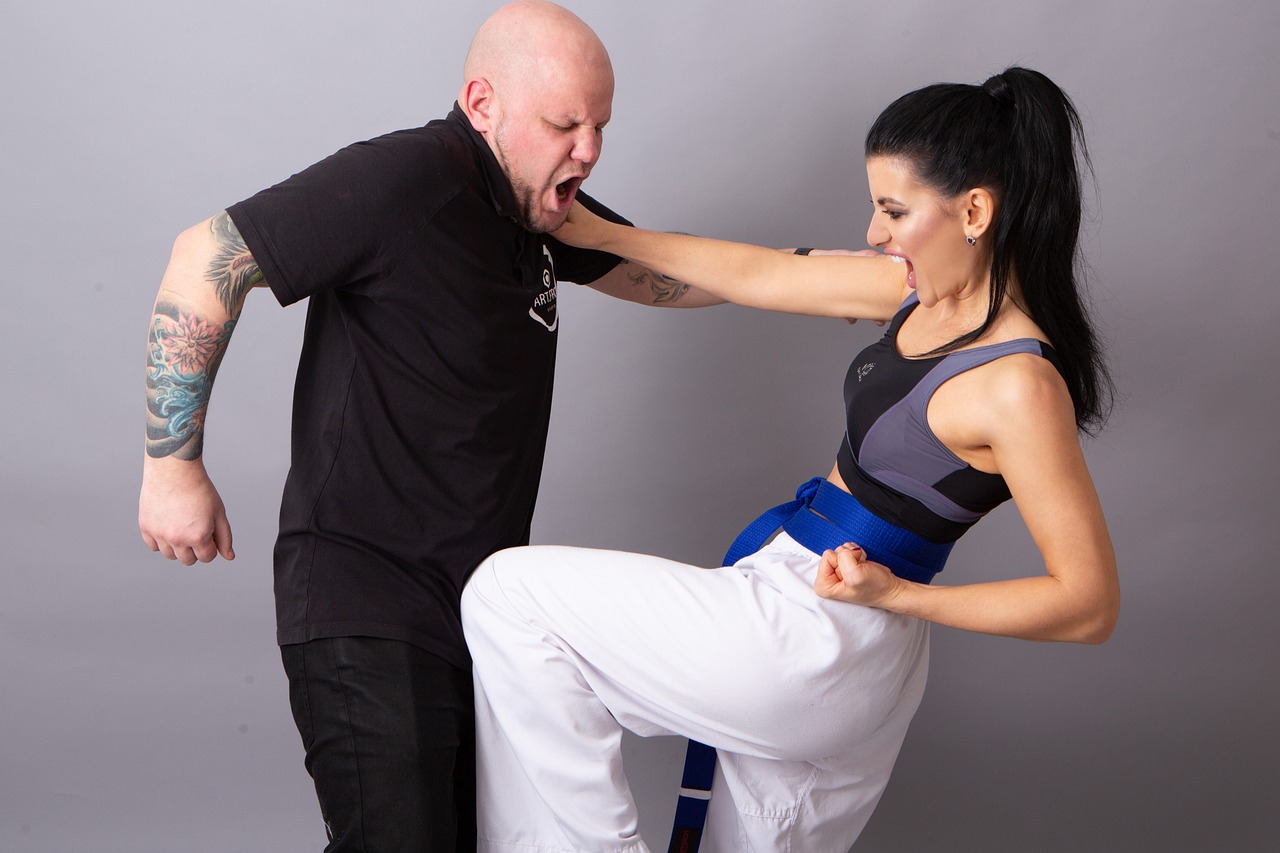Limitations of Self-Defense Techniques - A Reality Check
In today's world, the idea of self-defense often conjures images of martial arts experts effortlessly fending off attackers or everyday individuals triumphantly defending themselves against aggressors. However, the reality of self-defense is far more complicated. While self-defense techniques can be empowering and provide a sense of security, they come with a set of limitations that must not be overlooked. Understanding these limitations is crucial for anyone considering self-defense as a viable means of personal safety.
First and foremost, it's essential to recognize that self-defense techniques are not a one-size-fits-all solution. What works in a controlled training environment may not translate effectively to a real-life confrontation. For example, many self-defense classes emphasize specific moves or techniques that may seem effective on the surface. However, when faced with the unpredictability of an actual attack, individuals may find themselves overwhelmed by fear, confusion, or even physical limitations. This is where the importance of realistic training comes into play.
Moreover, the psychological aspect of self-defense cannot be ignored. When adrenaline kicks in during a confrontation, the body's fight or flight response can cloud judgment and hinder one's ability to execute learned techniques. Imagine being in a high-stress situation where your heart is racing, and your mind is racing even faster. In such moments, the techniques you've practiced might go out the window, leaving you vulnerable. This highlights the need for not just physical training, but also mental preparedness.
Legal implications further complicate the landscape of self-defense. Different jurisdictions have varying laws governing what constitutes acceptable self-defense. A technique that may be viewed as reasonable in one area could be considered excessive in another, leading to serious legal consequences. For instance, the concept of proportionality requires that any response to an attack must be appropriate to the threat faced. Misjudging the level of threat can result in criminal charges or civil liability, making it crucial for individuals to understand the legal boundaries of self-defense.
Additionally, the distinction between self-defense and aggression is vital. Engaging in aggressive behavior can blur the lines of legality, potentially leading to severe repercussions. It's not just about defending oneself; it's about ensuring that the response remains within the realms of what is legally and morally acceptable. In a moment of panic, it can be easy to cross that line, which is why awareness and control are essential components of effective self-defense.
Lastly, while physical techniques are important, they should not be the sole focus of self-defense training. Alternative strategies, such as de-escalation and avoidance, can often be more effective in ensuring personal safety. Sometimes, the best way to handle a potentially dangerous situation is to remove oneself from it entirely rather than engage physically. This proactive approach can prevent confrontations from escalating and can often lead to safer outcomes.
In summary, while self-defense techniques can be invaluable tools for personal safety, they come with significant limitations that must be acknowledged. Understanding the psychological factors at play, the legal implications of one's actions, and the importance of alternative strategies can provide a more comprehensive approach to self-defense. By fostering a realistic and informed perspective, individuals can better prepare themselves for whatever challenges they may face.
- What are the most common self-defense techniques? Common techniques include striking, blocking, and grappling moves, but their effectiveness can vary based on the situation.
- How can I prepare mentally for a self-defense situation? Mental preparation involves practicing mindfulness, visualization, and understanding your body's natural responses to stress.
- What should I do if I feel threatened? Assess the situation, consider de-escalation tactics, and if necessary, seek help or remove yourself from the environment.
- Are self-defense classes worth it? Yes, they can provide valuable skills and boost confidence, but it's essential to understand their limitations and the context in which they apply.

Understanding Self-Defense
Self-defense is not just about throwing punches or mastering fancy martial arts moves; it's a comprehensive approach that includes a variety of techniques and strategies aimed at protecting oneself from harm. Think of it as a toolbox filled with different instruments, each designed for a specific situation. However, the effectiveness of these tools greatly depends on the context in which they are used. Understanding the limitations of self-defense techniques is crucial for applying them effectively in real-life scenarios.
When we talk about self-defense, we often envision a physical confrontation where one person fights off an attacker. But the reality is much more complex. Self-defense encompasses a range of actions, from verbal de-escalation techniques to physical maneuvers. It's essential to recognize that not every situation warrants a physical response; sometimes, the best defense is to avoid confrontation altogether. This is where the mental aspect of self-defense comes into play.
Moreover, self-defense is influenced by various factors, including the environment, the nature of the threat, and the individual's own physical and psychological state. For instance, what works in a controlled training environment may not be effective in a real-world scenario where adrenaline is pumping, and fear is palpable. Understanding these nuances can make the difference between a successful defense and a regrettable outcome.
In addition, self-defense techniques can be categorized into three main types:
- Verbal Techniques: These include strategies for de-escalating a potentially violent situation through communication. The goal is to diffuse tension before it escalates into physical conflict.
- Physical Techniques: These are the actual maneuvers used to defend oneself, such as strikes, holds, and escapes. However, their success relies heavily on the situation and the defender's training.
- Environmental Awareness: This involves being aware of one's surroundings and identifying potential threats before they become dangerous. It’s about being proactive rather than reactive.
Ultimately, the key to effective self-defense lies in being well-rounded. It's not just about knowing how to fight; it's about knowing when to fight, when to flee, and how to communicate effectively. The more you understand the limitations of self-defense techniques, the better prepared you will be to handle real-life situations. So, as you explore self-defense, remember that knowledge and awareness are just as important as physical skills.

Legal Implications
When it comes to self-defense, understanding the is not just important; it’s essential. The laws governing self-defense vary widely from one jurisdiction to another, meaning that what might be acceptable in one area could lead to serious legal troubles in another. This inconsistency can lead to confusion and misinterpretation, especially for those who believe they are acting within their rights. Therefore, it’s crucial to familiarize oneself with the specific laws applicable in your location.
In many places, the concept of proportionality plays a significant role in determining whether a self-defense action is justified. This means that the response to an attack must be reasonable and proportionate to the threat posed. For example, if someone pushes you, responding with a lethal weapon can be seen as excessive. Misjudging the level of threat can lead to severe legal repercussions, including criminal charges or civil lawsuits. It’s a delicate balance that requires not only physical skills but also a sound understanding of the law.
| Type of Force | Legal Outcome |
|---|---|
| Reasonable Force | Justified self-defense |
| Excessive Force | Criminal charges |
| Retaliatory Force | Civil liability |
Additionally, understanding the difference between self-defense and aggression is vital. Many people mistakenly believe that any form of physical response to an attack is justified. However, aggressive actions can blur the lines of legality and may lead to severe consequences. If a confrontation escalates and you respond with aggression rather than self-defense, you could find yourself facing charges that could change your life forever.
In summary, the legal implications of self-defense are complex and multifaceted. To navigate these waters successfully, one must be aware of local laws, understand the principles of proportionality, and distinguish between self-defense and aggression. It’s a lot to consider, but being informed is the first step toward ensuring your actions are both effective and legally sound.
- What is the legal definition of self-defense? Self-defense is typically defined as the right to use reasonable force to protect oneself from imminent harm.
- Can I use self-defense if I provoke a fight? Generally, if you provoke a fight, your right to self-defense may be limited, especially if your actions were aggressive.
- What should I do if I have to use self-defense? After ensuring your safety, it’s crucial to contact law enforcement and seek legal advice as soon as possible.

Proportionality in Self-Defense
When it comes to self-defense, the concept of proportionality is not just a legal jargon; it's a fundamental principle that can dictate the outcome of a confrontation. Imagine you're in a heated situation where someone threatens you. The instinct to protect yourself kicks in, and you may feel the urge to retaliate with equal or greater force. However, this is where understanding proportionality becomes crucial. It's essential to recognize that your response must be reasonable and commensurate with the threat you face. If someone pushes you, responding with a punch or a weapon can escalate the situation unnecessarily and may even lead to serious legal repercussions.
The legal definition of proportionality varies by jurisdiction, but the underlying idea remains the same: your response should fit the level of threat. For instance, if an assailant is brandishing a knife, using a firearm in self-defense might be seen as excessive force. On the other hand, if someone is verbally threatening you without any physical action, retaliating with physical violence could be deemed unjustifiable. This brings us to the importance of assessing the situation before acting. It's like being a referee in a game; you need to understand the rules and the context to make an informed decision.
Moreover, misjudgment in assessing the threat can lead to dire consequences. For example, if you perceive a minor threat and respond with overwhelming force, you might find yourself facing criminal charges or civil liability. This could not only affect your freedom but also tarnish your reputation. The key takeaway here is to stay calm and evaluate the situation critically. Ask yourself: Is my response appropriate for the level of threat? This self-reflection can make all the difference in a critical moment.
In a nutshell, proportionality in self-defense is about balance. It’s about knowing when to stand your ground and when to de-escalate. The best self-defense technique is not just about physical prowess; it's about having the mental acuity to judge the situation accurately. Remember, the goal is to protect yourself, not to create further chaos. Always keep in mind that the law often scrutinizes self-defense cases closely, so ensuring your response is proportionate can safeguard you from unintended legal consequences.

Consequences of Excessive Force
When it comes to self-defense, the notion of excessive force is a critical consideration that can have severe repercussions. Picture this: you find yourself in a threatening situation where your instincts kick in, and you defend yourself. However, if your response is deemed excessive, the consequences can spiral out of control, leading to legal troubles that could change your life forever. Understanding what constitutes excessive force is essential for anyone who wishes to protect themselves while staying within the bounds of the law.
The legal definition of excessive force varies by jurisdiction, but generally, it refers to a response that goes beyond what is necessary to prevent harm. For instance, if someone pushes you and you respond by using a weapon or continuing to attack after the threat has ceased, you may be crossing that line. This can lead to criminal charges, which may include assault or battery, and civil liabilities, where the victim could sue you for damages. The implications of these legal outcomes can be devastating, both financially and emotionally.
Moreover, the perception of excessive force can often be subjective. What you believe is a justified reaction may be viewed differently by law enforcement or a jury. This subjectivity can lead to significant misunderstandings and misinterpretations of your actions. For example, if a bystander witnesses a confrontation and perceives your response as aggressive, they may report it to the police, leading to an investigation that could tarnish your reputation and result in legal action.
Here are some potential consequences of using excessive force in self-defense:
- Criminal Charges: You could face serious charges, including felony assault, which may result in imprisonment.
- Civil Liability: The injured party may sue you for damages, leading to significant financial strain.
- Loss of Self-Defense Claim: Excessive force can negate your claim of self-defense, leaving you vulnerable in court.
- Emotional and Psychological Impact: The stress and guilt of harming another person can lead to long-term mental health issues.
To avoid these pitfalls, it's crucial to understand the principle of proportionality in self-defense. This means your response should match the level of threat you are facing. If someone is merely shoving you, responding with a lethal weapon is not only unnecessary but also legally indefensible. Training in self-defense can help you gauge the appropriate level of response and prepare you mentally for high-pressure situations.
In conclusion, while self-defense is your right, the consequences of excessive force can be dire. It's vital to approach self-defense with a clear understanding of the legal landscape and the potential fallout from your actions. Always remember that the goal is to protect yourself, not to escalate the situation or cause unnecessary harm.
- What is considered excessive force in self-defense? Excessive force is when your response to a threat goes beyond what is necessary to protect yourself, potentially leading to legal repercussions.
- Can I be charged for defending myself? Yes, you can be charged if your response is deemed excessive or if you escalate the situation unnecessarily.
- How can I ensure my self-defense actions are legal? Understanding the laws in your jurisdiction and practicing proportional responses during self-defense training can help ensure your actions are within legal boundaries.
- What should I do after a self-defense incident? It's essential to contact legal counsel immediately and avoid discussing the incident until you have professional advice.

Self-Defense vs. Aggression
When it comes to personal safety, the distinction between self-defense and aggression is not just a matter of semantics; it can mean the difference between legal protection and serious consequences. Self-defense is fundamentally about protecting oneself from imminent harm, whereas aggression often implies an unprovoked attack or a retaliatory response that exceeds the necessary force to neutralize a threat. Understanding this distinction is crucial, especially in high-stress situations where emotions run high and decisions must be made in an instant.
One of the key factors that can blur the lines between self-defense and aggression is the perception of threat. For instance, if someone feels threatened, their instinct might be to strike first, even if the threat was not immediate or serious. This reaction can lead to a scenario where an individual is viewed as the aggressor, rather than the defender. It’s essential to recognize that the law often requires a clear and reasonable perception of threat to justify a self-defense claim. If you misjudge the situation, you could find yourself facing legal repercussions.
To illustrate this point further, let's consider a few common scenarios:
| Scenario | Self-Defense | Aggression |
|---|---|---|
| Someone approaches you aggressively in a dark alley. | You respond by raising your hands and telling them to back off. | You punch them without warning. |
| A verbal argument escalates. | You walk away to avoid confrontation. | You shove the other person first. |
| Someone threatens you with a weapon. | You defend yourself with reasonable force. | You escalate the situation by attacking them even after they back down. |
In each of these examples, the actions taken can be interpreted very differently based on the context and the intent behind them. The law typically supports actions that are clearly defensive and proportional to the threat faced. Therefore, it’s vital to maintain a level head and assess the situation accurately before responding. Remember, the goal of self-defense is not to inflict harm but to protect oneself from harm.
Additionally, the emotional and psychological state of an individual plays a significant role in determining whether an action is seen as self-defense or aggression. Factors such as fear, anger, and adrenaline can cloud judgment and lead to aggressive responses that might not be justified. It’s essential to practice self-awareness and emotional regulation, especially in potentially dangerous situations.
In conclusion, understanding the difference between self-defense and aggression is not just about knowing the law; it’s about cultivating a mindset that prioritizes safety and de-escalation over confrontation. By doing so, you not only protect yourself legally but also contribute to a safer environment for everyone involved.
- What constitutes self-defense? Self-defense is the act of protecting oneself from imminent harm using reasonable force.
- Can I use self-defense if I am not physically attacked? Generally, self-defense requires an immediate threat; preemptive strikes may be considered aggression.
- What should I do if I feel threatened? Try to de-escalate the situation, remove yourself from the area, and seek help if necessary.
- How can I legally protect myself? Understanding local laws regarding self-defense, practicing situational awareness, and considering non-violent strategies are key.

Effectiveness of Techniques
When it comes to self-defense, not all techniques are created equal. The effectiveness of various self-defense methods can vary dramatically based on numerous factors, such as the environment, the physical condition of the individuals involved, and the unpredictability of a confrontation. It's essential to recognize that what works in a controlled training environment may not translate seamlessly into a real-world scenario. For instance, a technique that relies on precision and timing may falter when adrenaline kicks in, and the stakes are high.
Many self-defense classes promote flashy moves that look impressive in demonstrations, but in the chaos of an actual attack, these techniques can become impractical. Consider the difference between a well-rehearsed martial arts move and a spontaneous reaction to an unexpected threat. The latter often leads to instinctive responses rather than calculated techniques. This is where understanding the limitations of your training becomes crucial.
To illustrate this point, let’s look at some common self-defense techniques and their potential limitations:
| Technique | Potential Limitations |
|---|---|
| Striking (Punches, Kicks) | Requires precision; may not be effective against larger or more aggressive attackers. |
| Joint Locks | Can be difficult to execute under stress; requires close proximity to the attacker. |
| Escapes from Grabs | May not work if the attacker is significantly stronger; relies on timing and technique. |
| Weapons Defense | Risky; misjudgment can lead to severe injury or escalation of the situation. |
It’s also important to consider the context in which these techniques are applied. For example, while striking might be effective in a one-on-one scenario, it may not be the best option in a crowded area where bystanders could be harmed. In such cases, the focus should shift towards evasion and de-escalation rather than physical confrontation. This brings us to an essential truth about self-defense: the ultimate goal is not to win a fight but to ensure your safety and well-being.
Another factor to consider is the psychological impact of a confrontation. In the heat of the moment, fear and adrenaline can cloud judgment, making it difficult to remember and execute learned techniques. This is why training should include not only physical practice but also mental conditioning. Practicing under stress through simulations can help prepare individuals for the chaos of real-life situations.
In conclusion, while self-defense techniques can provide valuable tools for personal safety, their effectiveness is contingent on various factors that must be understood and respected. Training should focus on realistic scenarios, emphasizing adaptability and the importance of mental preparedness. Remember, the best self-defense strategy often involves avoiding confrontation altogether whenever possible.
- What is the most effective self-defense technique? The effectiveness of a technique depends on the situation. Techniques that emphasize evasion and de-escalation are often more effective than physical confrontation.
- Do I need to be physically strong to defend myself? Not necessarily. Many self-defense techniques rely on leverage and technique rather than brute strength.
- How can I prepare mentally for a confrontation? Mental preparation can be achieved through simulation training, visualization techniques, and understanding your own stress responses.
- Is it legal to use self-defense techniques? Yes, but the legality depends on the proportionality of your response to the threat. Always be aware of local laws regarding self-defense.

Psychological Factors
When it comes to self-defense, one of the most overlooked aspects is the psychological factor. It’s not just about knowing how to throw a punch or where to kick; it’s about how we react under pressure. Imagine you're walking down a quiet street and suddenly find yourself confronted by an aggressive individual. The immediate rush of fear and adrenaline can cloud your judgment and impact your ability to execute those self-defense techniques you practiced so diligently. This is where understanding the psychological components becomes crucial.
The human body is wired to respond to threats through what is known as the fight or flight response. This instinctual reaction can be a double-edged sword. On one hand, it can provide the energy and motivation needed to defend oneself; on the other, it can lead to panic and confusion, making it hard to think clearly. When faced with a threat, your heart races, your palms sweat, and your mind may go blank. Have you ever tried to remember a specific technique while your body is in full survival mode? It’s like trying to recall a song you love while someone is blaring a horn in your ear!
Moreover, the psychological state of an individual can significantly influence their performance in a self-defense situation. Those who train regularly may find that their response is more instinctual, while someone who has never been in a confrontation may freeze. Regular training not only enhances physical skills but also builds mental resilience. The more scenarios you expose yourself to during training, the better prepared you’ll be when it really matters. It’s akin to rehearsing for a play; the more you practice your lines, the less likely you are to forget them when the curtain rises.
In addition to training, mental preparedness plays a vital role. This involves visualizing potential confrontations and mentally rehearsing your responses. By doing so, you can condition your mind to respond more effectively under stress. It’s like a mental warm-up before a big game; you’re setting yourself up for success. Furthermore, being aware of your surroundings and practicing situational awareness can help mitigate dangerous situations before they escalate.
Let’s not forget that the psychological impact of a confrontation can extend beyond the moment of self-defense. Many individuals experience anxiety or post-traumatic stress after a violent encounter. Understanding these psychological factors is essential for anyone considering self-defense techniques. It’s not just about the physical confrontation; it’s about being mentally prepared for the aftermath as well.
In summary, the psychological factors surrounding self-defense are just as important as the physical techniques themselves. Fear, adrenaline, and mental preparedness all play a role in how effectively one can defend themselves. By recognizing these elements, individuals can better equip themselves for the unpredictable nature of real-world confrontations.
- What is the fight or flight response?
The fight or flight response is a natural physiological reaction to perceived threats, preparing the body to either confront or flee from danger. - How can I improve my mental preparedness for self-defense?
Mental preparedness can be improved through visualization techniques, regular training, and practicing situational awareness. - Why is psychological training important in self-defense?
Psychological training helps individuals manage fear and stress during confrontations, enhancing their ability to respond effectively. - Can self-defense training reduce anxiety in real-life situations?
Yes, consistent training can increase confidence and reduce anxiety by familiarizing individuals with potential scenarios they may face.

Fight or Flight Response
The is a natural, physiological reaction that occurs in the face of perceived danger. It’s like an internal alarm system that gets triggered when we feel threatened, preparing our bodies for action. Imagine walking through a dark alley and suddenly hearing footsteps behind you; your heart races, your palms sweat, and your mind goes into overdrive. This is your body gearing up to either confront the threat or escape it. But here’s the kicker: while this response can be lifesaving, it can also hinder our ability to effectively utilize self-defense techniques.
When faced with a threatening situation, the body releases a cocktail of hormones, including adrenaline and cortisol, which can lead to a series of physical changes. Your muscles tense up, your senses sharpen, and your reaction time quickens. However, this heightened state of alertness can also cloud judgment. In the heat of the moment, you might forget the self-defense moves you practiced or misjudge the situation entirely. It’s like trying to solve a complex math problem while someone is yelling at you; the pressure can easily overwhelm your ability to think clearly.
Moreover, the fight or flight response varies from person to person. Some individuals may find themselves frozen in fear, unable to move or react. Others might instinctively choose to fight, even when retreating might be the safer option. This unpredictability makes it crucial to understand your own responses to stress and fear. Regular training can help, but it’s equally important to engage in mental exercises that prepare you for the unexpected. Techniques such as visualization, where you mentally rehearse scenarios, can help condition your mind to respond more effectively under pressure.
To illustrate how the fight or flight response can impact self-defense, consider the following table:
| Response Type | Characteristics | Impact on Self-Defense |
|---|---|---|
| Fight | Increased aggression, readiness to confront | May lead to overexertion or misjudgment of threat |
| Flight | Desire to escape, heightened awareness | Can be the safest option, but may lead to feelings of helplessness |
| Freeze | Inability to move or react | Can result in missed opportunities to escape or defend oneself |
Understanding these responses can empower individuals to better prepare for potential confrontations. Training in self-defense should not only focus on physical techniques but also incorporate mental resilience strategies. By doing so, you can enhance your ability to respond appropriately when the unexpected occurs. Remember, the goal of self-defense is not just about fighting back; it’s about ensuring your safety and making informed decisions in stressful situations.
- What is the fight or flight response? The fight or flight response is a physiological reaction that prepares the body to either confront or flee from perceived danger.
- How does stress affect self-defense? Stress can cloud judgment and hinder the ability to execute learned self-defense techniques effectively.
- Can training help with fight or flight responses? Yes, regular training can improve your ability to respond under pressure and enhance mental preparedness.
- What should I do if I freeze during a confrontation? Practicing mental exercises and situational awareness can help you break free from a freeze response.

Training and Preparedness
When it comes to self-defense, the old saying "practice makes perfect" couldn't be more accurate. Training isn't just about learning a few moves; it's about developing a mindset and honing your instincts. Imagine being in a high-pressure situation where your heart is racing, and your mind is clouded with fear. In such moments, your body will naturally revert to what it knows best. This is why regular training is essential. It builds muscle memory and helps you react instinctively when every second counts.
Moreover, training is not a one-time event. It requires ongoing commitment and practice. Just like any other skill, self-defense techniques can fade if not regularly exercised. Consider this: a musician who doesn’t practice their instrument will quickly lose their touch. Similarly, if you don’t keep practicing your self-defense techniques, your ability to execute them under stress will diminish.
But what does effective training look like? It often combines physical techniques with mental preparation. Physical training can include various forms, such as martial arts, boxing, or even self-defense classes. Each of these disciplines offers unique benefits, but they all share a common goal: to prepare you for real-life confrontations. On the mental side, visualization techniques can be incredibly beneficial. Picture yourself in a dangerous situation and mentally rehearse how you would respond. This can help reduce anxiety and improve your response time when faced with actual threats.
In addition to physical and mental training, situational awareness is a crucial component of preparedness. Understanding your environment, recognizing potential threats, and being able to assess situations quickly can make a significant difference in your safety. For instance, being aware of your surroundings can help you avoid dangerous situations altogether. Here are a few key points to keep in mind:
- Stay Alert: Always be aware of who and what is around you.
- Trust Your Instincts: If something feels off, it probably is.
- Plan Your Escape: Know your exits in any environment.
Lastly, consider the role of self-defense classes in your training regimen. They not only teach you techniques but also provide a controlled environment where you can practice under the guidance of experienced instructors. This feedback can be invaluable, helping you to refine your skills and build confidence. Remember, being prepared isn't just about knowing how to fight; it's about being ready to face any situation with composure and awareness.
Q: How often should I train for self-defense?
A: Ideally, you should train regularly, at least once a week, to maintain your skills and stay sharp.
Q: Can self-defense training help with confidence?
A: Absolutely! Training not only equips you with techniques but also boosts your self-esteem and confidence in your ability to handle confrontations.
Q: What should I do if I can't afford formal training?
A: There are many resources available online, including videos and tutorials. However, practicing with friends or in community groups can also be beneficial.
Q: Is self-defense only about physical techniques?
A: Not at all! Mental preparedness and situational awareness are just as crucial, if not more so, than physical techniques.

Alternative Strategies for Safety
When it comes to personal safety, relying solely on physical self-defense techniques can sometimes be a risky gamble. While it’s great to know how to throw a punch or execute a swift kick, there are alternative strategies that can be just as effective, if not more so. These strategies focus on prevention and de-escalation, ensuring that you can navigate potentially dangerous situations without resorting to violence.
One of the most important aspects of personal safety is awareness. Being aware of your surroundings can help you avoid dangerous situations before they escalate. This means keeping your head up, noticing the people around you, and recognizing when something feels off. For example, if you’re walking alone at night and notice someone following you, it’s better to change your route or move into a well-lit area rather than waiting to see what happens. Awareness is your first line of defense.
Another effective strategy is de-escalation. This involves using verbal communication to diffuse a tense situation. If you find yourself in a confrontation, staying calm and using a non-threatening tone can often prevent things from getting out of hand. Here are a few tips for effective de-escalation:
- Maintain a calm demeanor: Your body language can influence the other person’s reaction.
- Use open-ended questions: This encourages dialogue rather than confrontation.
- Validate their feelings: Acknowledging their emotions can help reduce tension.
Moreover, it’s essential to consider the option of avoidance. Sometimes the best self-defense is simply not engaging at all. If you sense that a situation could escalate, look for an exit. Avoiding confrontation can save you from potential harm and legal troubles. For instance, if you’re at a bar and see a heated argument brewing, it might be wise to leave the premises rather than sticking around to see how things unfold.
In addition to these strategies, having a plan can significantly enhance your safety. Think about the different scenarios you might encounter and how you would react. This mental rehearsal can prepare you for real-life situations, making it easier to respond effectively under pressure. Consider practicing these strategies with friends or family, so they become second nature.
Lastly, remember that personal safety is not just about physical techniques or avoidance; it also involves building a support network. Surround yourself with friends and family who understand the importance of safety and can help you stay vigilant. Sharing your concerns and experiences can also provide valuable insights and strategies that you may not have considered.
| Question | Answer |
|---|---|
| What is the best way to avoid dangerous situations? | Stay aware of your surroundings and trust your instincts. If something feels off, remove yourself from the situation. |
| Can verbal de-escalation really work? | Yes, using a calm and non-threatening tone can help diffuse tension and prevent a confrontation from escalating. |
| How can I prepare mentally for a confrontation? | Consider different scenarios and rehearse your responses. Practicing with friends can also help you feel more confident. |
| Is it better to engage or avoid a confrontation? | Avoidance is often the safest option. Engaging can lead to unnecessary risks and complications. |
Frequently Asked Questions
- What are the main limitations of self-defense techniques?
Self-defense techniques often have limitations such as effectiveness in unpredictable situations, legal repercussions, and the psychological impact of stress. It's vital to recognize that techniques practiced in a controlled environment may not translate well into real-life confrontations.
- How does the legal framework affect self-defense?
The legal implications of self-defense vary by jurisdiction, meaning that what is considered acceptable in one area may not be in another. Understanding local laws is crucial, as misjudgment can lead to criminal charges or civil liability.
- What is the importance of proportionality in self-defense?
Proportionality requires that the response to an attack be reasonable and commensurate with the threat faced. Misjudging the level of threat can result in excessive force, which can have serious legal consequences.
- Can self-defense be considered aggression?
Yes, self-defense can sometimes be perceived as aggression if the response is deemed excessive or unnecessary. It's crucial to distinguish between protecting oneself and overreacting, as this can blur legal lines and lead to severe repercussions.
- How do psychological factors influence self-defense effectiveness?
Psychological factors like fear and adrenaline play a significant role in how individuals react during confrontations. The fight or flight response can impact decision-making and the ability to execute learned techniques under pressure.
- Why is training important for self-defense?
Regular training and mental preparedness are essential for effective self-defense. Ongoing practice helps individuals build muscle memory and situational awareness, making them more equipped to handle real-life threats.
- What alternative strategies can enhance personal safety?
In addition to physical techniques, strategies such as de-escalation and avoidance can be very effective. Non-violent approaches often prevent confrontations from escalating and ensure personal safety without resorting to aggression.



















